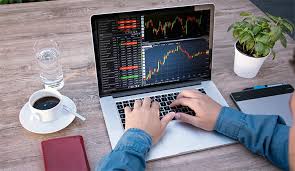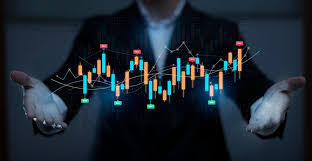
The Future of Forex: Robot Trading in 2023
The trading landscape has rapidly changed over the past few decades. With the advent of technology, trading has shifted from traditional methods to sophisticated algorithms and systems. Among these advancements, robot trading in the forex market has emerged as a powerful tool for both novice and seasoned traders. In this article, we will delve into the concept of robot trading, its advantages, challenges, and its future potential in the forex market. For those looking to start their journey in forex trading, resources like robot trading forex FX Trading Broker can provide valuable insights and assistance.
Understanding Robot Trading
Also known as automated trading or algorithmic trading, robot trading involves using computer programs to execute trades in the forex market based on pre-defined criteria and algorithms. These robots are designed to analyze market data, execute trades, and manage trading accounts autonomously, significantly reducing the need for manual intervention. By utilizing advanced mathematical models, robot trading can process vast amounts of data much quicker than human traders, allowing for real-time decision-making.
Advantages of Robot Trading
There are several advantages associated with robot trading in the forex market, including:
- Emotionless Trading: One of the biggest challenges for human traders is managing emotions. Fear and greed can lead to poor decision-making. Robot trading eliminates emotional trading, allowing for a disciplined approach based solely on data.
- Speed and Efficiency: Robot trading can execute trades within milliseconds, far surpassing the speed of human traders. This rapid execution can be crucial in volatile markets where prices change quickly.
- Backtesting Capabilities: Traders can backtest their trading strategies using historical data before deploying them in real-time. This helps validate and optimize strategies without risking capital.
- 24/7 Market Monitoring: Forex markets operate 24 hours a day, and robot trading allows for constant market monitoring and trading opportunities, even when the trader is not actively engaged.
- Diverse Strategy Implementation: Robo-traders can incorporate various strategies simultaneously, providing exposure to different currency pairs and trading conditions.
Challenges of Robot Trading
While robot trading has numerous benefits, it also presents challenges that traders should be aware of:

- Technical Risks: Automated systems can suffer from software glitches, power failures, or connectivity issues that could lead to substantial losses if not monitored properly.
- Lack of Flexibility: Robots trade based on predefined algorithms. In dynamic market conditions, these predefined rules may not adapt well, possibly leading to suboptimal performance.
- Over-Optimization: Many traders fall into the trap of curve fitting, where they tweak their algorithms based on historical data to achieve unrealistic returns. This often results in poor performance in live trading conditions.
- Dependence on Technology: Relying solely on an automated system can hinder a trader’s ability to learn and understand market fundamentals.
The Impact of Artificial Intelligence and Machine Learning
The integration of artificial intelligence (AI) and machine learning (ML) into robot trading systems represents the next frontier in forex trading. These technologies allow robots to learn from historical data, identify patterns, and adapt their trading strategies over time. As AI and ML develop, robot traders can become more sophisticated, increasing their chances of success in the ever-evolving forex markets. By adjusting to new data and market conditions, these advanced robots can potentially outperform traditional trading methods in the long run.
Choosing the Right Robot Trading System
With numerous robot trading systems available in the market, selecting the right one can be overwhelming. Traders should consider factors such as:
- Performance History: Review the robot’s historical performance and backtesting results to gauge its effectiveness over different market conditions.
- Transparency: Choose systems that provide detailed information about their algorithms and trading strategies. Transparency builds trust and confidence in the system.
- Customer Support: Reliable customer support is essential for troubleshooting and assistance if issues arise during the trading process.
- Community Feedback: Seek reviews and opinions from other traders regarding their experiences with the robot trading system. This can provide valuable insights into its reliability and performance.
Future of Robot Trading in Forex
The future of robot trading in the forex market looks promising, particularly with the continued advances in technology. The increasing integration of AI and ML will enable robots to become more effective in executing trades and managing risks. Additionally, as the forex market becomes more accessible, we can anticipate a rise in the adoption of robot trading among retail traders, democratizing access to sophisticated trading tools. Though challenges persist, the ongoing development in trading algorithms may mitigate some of the current risks associated with automated trading.
Conclusion
Robot trading has transformed how traders approach the forex market, bringing forth numerous advantages while posing certain challenges. Understanding these elements is crucial for anyone considering automated trading as a strategy. As technology continues to advance, the potential for robot trading to enhance trading performance and profitability will only increase. By strategically utilizing tools such as FX Trading Broker, traders can harness the power of automation to navigate the complexities of forex trading while maximizing their chances of success.

Recent Comments